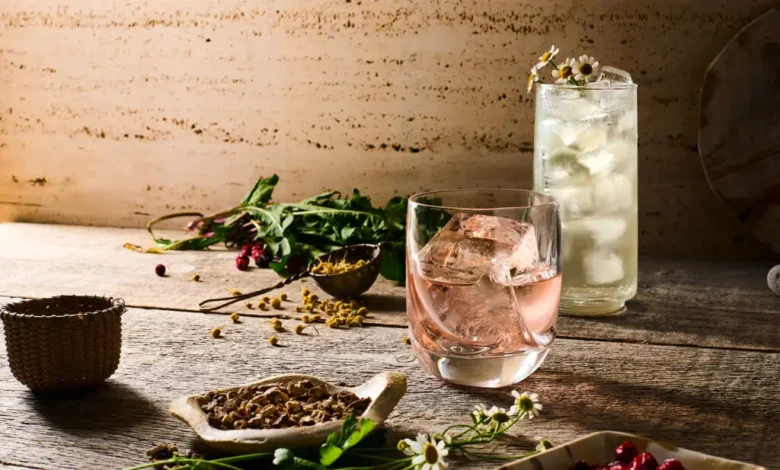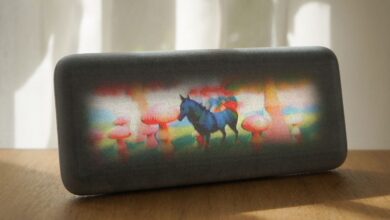The Sidewalk Speakeasy: An Urban Foraging Guide for Craft Cocktails

The world of craft cocktails has always celebrated fresh, high-quality ingredients. We obsess over artisanal spirits, cold-pressed juices, and handcrafted bitters. But what if the most unique and flavorful ingredients aren’t in a specialty store, but growing in the park down the street, sprouting from a crack in the sidewalk, or dangling from a tree in your neighbor’s yard?
Welcome to the exciting and sustainable practice of urban foraging for cocktails. This isn’t just about plucking a random leaf; it’s the art of safely identifying and harvesting wild, edible plants from your city environment to create one-of-a-kind infusions, syrups, bitters, and garnishes that will transform your mixology game. This guide is your map to discovering the secret, drinkable bounty of your city.
Why Forage for Your Cocktails?
At first glance, the idea might seem strange. But combining urban foraging with mixology offers a wealth of benefits:
- Unrivaled Flavor Profiles: You can’t buy the taste of fresh pine needles, wild violets, or crabapples at the store. Foraged ingredients offer complex, hyperlocal flavors that add a unique terroir—a “taste of place”—to your drinks.
- Ultimate Sustainability: Using what grows freely and abundantly around you is the pinnacle of sustainable sourcing. It reduces your carbon footprint, packaging waste, and reliance on commercial supply chains.
- A Deeper Connection to Your Environment: Urban foraging forces you to slow down and observe your surroundings. You’ll start to see your city not as a concrete jungle, but as a living ecosystem full of potential.
- The Ultimate Conversation Starter: Serving a “Dandelion Old Fashioned” or a “Pine Needle Gin Fizz” made with ingredients you personally harvested is a story in a glass.
The Golden Rules of Safe Urban Foraging
Before you grab a basket and head out, it’s crucial to understand that safety is paramount. The city is not a pristine forest. Following these rules is non-negotiable.
Rule #1: Absolute Certainty in Identification
This is the most important rule. If you are not 100% certain what a plant is, do not pick it, and never consume it. Many edible plants have toxic look-alikes.
- Invest in a Good Field Guide: Get a reliable book specific to your region’s local flora.
- Use Plant Identification Apps: Apps like PictureThis or iNaturalist are great starting points, but always cross-reference with at least two other reliable sources.
- Find a Mentor: The best way to learn is from an experienced forager. Look for local foraging walks or workshops in your area.
Rule #2: Know the History of the Land
Where you pick is as important as what you pick.
- Avoid High-Pollution Zones: Never forage from plants growing alongside busy roads, near industrial sites, or in areas where pesticides and herbicides are likely to be sprayed (like manicured lawns or some city parks).
- The “Dog-Pee-Line”: As a general rule, avoid harvesting anything below waist height in areas with high foot traffic or where people walk their dogs.
- Respect Private Property: Never trespass. If you see a fruit-laden tree in someone’s yard, always ask for permission before picking. Most people are happy to share their excess bounty.
Rule #3: Harvest Responsibly and Sustainably
A good forager leaves a place better than they found it.
- Take Only What You Need: Harvest in small quantities, never taking more than 10% of a single plant or patch. This ensures the plant can continue to thrive and that there is plenty left for wildlife.
- Minimize Damage: Use scissors or a sharp knife to make clean cuts. Don’t rip or tear plants, and never pull them up by the roots unless that’s the part you are harvesting (and it’s an abundant, invasive species).
Your First Foraging Mission: Easy-to-Find Plants for Cocktails
Ready to start? Here are five common and easily identifiable urban plants that are perfect for beginners looking to experiment with urban foraging for cocktails.
1. Dandelions (Taraxacum officinale)
Often seen as a weed, the dandelion is an incredibly versatile and edible plant.
- What to Harvest: The bright yellow flowers.
- Cocktail Use: Dandelion Wine or Syrup. For a simple syrup, steep a cup of dandelion flower heads (with green parts removed) in hot simple syrup (1:1 sugar and water) for about 30 minutes, then strain. This golden, honey-like syrup is fantastic in a classic Old Fashioned or a simple gin and soda.
- Flavor Profile: Sweet, honeyed, and slightly floral.
2. Violets (Viola species)
These beautiful little purple or white flowers are often found in shady, undisturbed parts of lawns and parks in the spring.
- What to Harvest: The flower petals.
- Cocktail Use: Violet Liqueur (Crème de Violette) or Color-Changing Syrup. To make a stunning syrup, infuse violet petals in hot simple syrup. The magic happens when you add a touch of acid (like lemon juice); the syrup will turn from a deep blue-purple to a vibrant magenta. It’s a showstopper in an Aviation cocktail or a gin fizz.
- Flavor Profile: Delicate, floral, and slightly sweet.
3. Pine Needles (Pinus species)
Yes, you can drink pine trees! The needles of most pine, fir, and spruce trees are edible and packed with Vitamin C. (Warning: Avoid the Yew tree, as it is highly toxic).
- What to Harvest: Young, bright green tips in the spring are best, but any green needles will work.
- Cocktail Use: Pine-Infused Gin or Syrup. Gently muddle a handful of chopped pine needles in a jar and cover with your favorite gin. Let it infuse for 24-48 hours, then strain. The resulting gin has a fresh, resinous, and forest-like aroma, perfect for a Gin and Tonic with a twist. A pine simple syrup also makes an incredible seasonal sour.
- Flavor Profile: Resinous, citrusy, and woodsy.
4. Crabapples (Malus species)
These small, tart apples grow on ornamental trees found in parks and gardens all over the world. They are often ignored, but they are a goldmine for cocktail making.
- What to Harvest: The fruit, typically in late summer or fall.
- Cocktail Use: Spiced Crabapple Liqueur or Shrub. A shrub (or drinking vinegar) is a classic cocktail ingredient. Cook down chopped crabapples with sugar and apple cider vinegar, then strain. The resulting sweet-tart syrup is phenomenal with whiskey or rum. You can also press them for juice to use in a seasonal punch.
- Flavor Profile: Very tart, acidic, and intensely apple-y.
5. Elderflowers (Sambucus species)
In early summer, elderberry bushes explode with large, creamy-white flower clusters that have an intoxicating scent.
- What to Harvest: The entire flower head. (Warning: Only harvest the flowers or ripe black/blue berries. The leaves, stems, and unripe green berries are toxic).
- Cocktail Use: Homemade Elderflower Liqueur. This is the key ingredient in a St-Germain cocktail. Submerge several elderflower heads in a base spirit like vodka or gin with some sugar and lemon peel. Let it infuse for a few days to a week. The result is a fragrant, floral liqueur that elevates any sparkling wine or simple mixed drink.
- Flavor Profile: Sweet, musky, and uniquely floral with hints of lychee and pear.
The Urban Forager’s Home Bar: Basic Preparations
Once you’ve brought your harvest home, you’ll need to turn it into something usable for your bar. The three most common preparations are:
- Infusions: Steeping your foraged goods (like pine needles, berries, or herbs) directly in a spirit (vodka, gin, whiskey) to extract its flavor.
- Syrups: Dissolving sugar in water and infusing it with your foraged ingredients (like flowers or fruits) to create a flavored sweetener.
- Shrubs: Creating a “drinking vinegar” by combining your foraged fruit with sugar and vinegar. The acidity makes it a fantastic, complex mixer.
Conclusion: Taste Your City
The practice of urban foraging for cocktails is about more than just making a drink. It’s an act of reconnection—with nature, with your community, and with the flavors that define your specific corner of the world. It encourages you to look closer, to be more mindful, and to find beauty and utility in the overlooked and unexpected.
So next time you’re planning a cocktail night, take a walk first. Your next great drink might just be waiting for you, hidden in plain sight.




